Dispersal in Science
Dispersal in science refers to the movement of organisms from one place to another. This can occur through a variety of means, such as wind, water, or through the actions of other organisms. Dispersal is an important concept in understanding the distribution of species and the colonization of new habitats.
Types of Dispersal
There are several types of dispersal:
- Self-Dispersal: Some organisms have adaptations that allow them to disperse on their own, such as seeds that are carried by the wind or fruits that are eaten by animals and then excreted in a new location.
- Passive Dispersal: Organisms may also be carried passively by natural forces, such as seeds floating on water or being carried by ocean currents.
- Active Dispersal: Some organisms actively move to new locations in search of resources or to escape unfavorable conditions.
Importance of Dispersal
Dispersal is important for the survival and evolution of species. It allows organisms to colonize new habitats, escape from competition or predators, and maintain genetic diversity within populations.
Study Guide
Here are some key points to remember about dispersal:
- Define dispersal and explain its significance in ecology.
- Identify and describe the different types of dispersal.
- Discuss the role of dispersal in the distribution of species and the colonization of new habitats.
- Explain how human activities can impact dispersal patterns of organisms.
- Give examples of how dispersal can affect the genetic diversity of populations.
Understanding dispersal is crucial in studying the dynamics of ecosystems and the interconnectedness of species within them.
.◂Science Worksheets and Study Guides Third Grade. Weather
Study Guide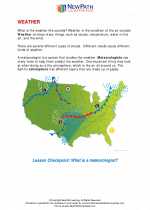 Weather
Weather  Worksheet/Answer key
Worksheet/Answer key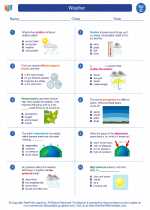 Weather
Weather  Worksheet/Answer key
Worksheet/Answer key Weather
Weather  Worksheet/Answer key
Worksheet/Answer key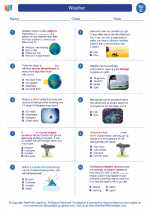 Weather
Weather  Vocabulary/Answer key
Vocabulary/Answer key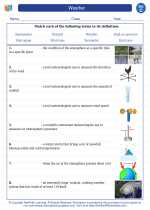 Weather
Weather  Vocabulary/Answer key
Vocabulary/Answer key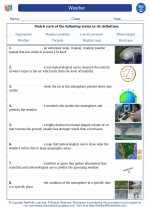 Weather
Weather 

 Worksheet/Answer key
Worksheet/Answer key
 Worksheet/Answer key
Worksheet/Answer key
 Worksheet/Answer key
Worksheet/Answer key
 Vocabulary/Answer key
Vocabulary/Answer key
 Vocabulary/Answer key
Vocabulary/Answer key

The resources above cover the following skills:
EARTH AND SPACE SCIENCE (NGSS)
Earth’s Systems
Students who demonstrate understanding can:
Represent data in tables and graphical displays to describe typical weather conditions expected during a particular season.